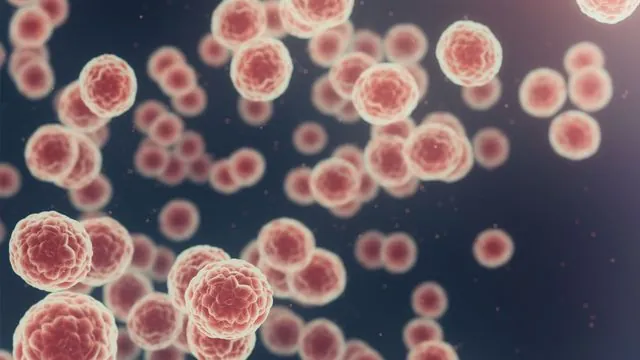
Hope on the Horizon: MicroRNA Biomarkers Could Revolutionize Testicular Cancer Detection
2025-03-26
Author: Wei Ling
Groundbreaking Study from Cornell University
In a groundbreaking study from Cornell University, researchers have validated a promising biomarker for detecting malignant testicular germ cell tumors—known as the most prevalent solid tumors affecting young men. This significant discovery not only heralds a potential shift toward earlier detection of this cancer, which could even happen prenatally, but also emphasizes the importance of non-invasive testing methods.
Focus on MicroRNAs
Published in *Scientific Reports*, the study focuses on specific microRNAs (miRNAs) that have shown great promise in detecting these tumors in a mouse model. These miRNAs regulate gene expression by inhibiting the production of proteins and have a human counterpart, further enhancing their potential as a reliable biomarker for testicular cancer.
Shift Toward Liquid Biopsies
Professor Robert Weiss, head of the study and a molecular genetics expert in the College of Veterinary Medicine, emphasized the shift toward "liquid biopsies." These minimally invasive tests can monitor cancer presence using blood samples, thereby paving the way for early detection and monitoring of treatment efficacy. "This is a terrific example of advancement in technology that could change lives," Weiss stated.
Statistics on Testicular Germ Cell Tumors
Testicular germ cell tumors are particularly concerning as they have seen nearly a 40% increase in incidence over the past fifty years among males aged 15 to 39 in the United States. Despite this alarming rise, the tumors have a commendable five-year survival rate of about 95% due to their responsiveness to chemotherapy. However, research indicates that these tumors may originate during embryonic development in utero, often progressing to invasive cancer after puberty.
Role of Pluripotent Stem Cells
Notably, the study identified that these tumors contain pluripotent stem cells, which can evolve into various types of cancer cells. The mouse model employed allowed researchers to explore testicular cancer development more intricately—by specifically targeting these stem cells, they could analyze their differentiation into specialized tumor cells, providing a clearer understanding of cancer progression.
Discovery of miRNA Clusters
Motivated by clinical evidence suggesting that miRNAs circulating in blood serum could serve as biomarkers, the Cornell team discovered that specific miRNA clusters—designated miRNA 290-295 in mice—are exclusive to undifferentiated testicular cancer cells. Their human equivalents are part of the miRNA 371-373 cluster. These findings highlight the unique expression patterns that distinguish malignant testicular tumors from other conditions, enhancing diagnostic accuracy.
Targeted Gene Identification
Moreover, the researchers pinpointed the genes targeted by these miRNAs, which regulate critical processes related to cancer, such as the cell cycle and apoptosis, or programmed cell death. The specificity of the identified miRNAs makes them potent biomarkers, as they can effectively differentiate between malignant and benign tumors.
Significance of Mouse Models
Weiss emphasized the significance of the mouse model in this research, arguing that it provides an authentic framework for understanding human diseases at a level that would not be feasible in human trials. With promising results already achieved, the research team plans to delve deeper into the functional roles of these miRNAs, seeking to unlock their potential as therapeutic targets to inhibit tumor growth and metastasis.
Conclusion and Future Directions
In conclusion, this research not only enhances our understanding of testicular cancer but also opens new avenues for early diagnosis and treatment. As scientists continue to explore the implications of miRNA biomarkers, the future of testicular cancer detection looks increasingly hopeful. Stay tuned for further updates, as these developments may soon lead to breakthroughs that save lives!




 Brasil (PT)
Brasil (PT)
 Canada (EN)
Canada (EN)
 Chile (ES)
Chile (ES)
 Česko (CS)
Česko (CS)
 대한민국 (KO)
대한민국 (KO)
 España (ES)
España (ES)
 France (FR)
France (FR)
 Hong Kong (EN)
Hong Kong (EN)
 Italia (IT)
Italia (IT)
 日本 (JA)
日本 (JA)
 Magyarország (HU)
Magyarország (HU)
 Norge (NO)
Norge (NO)
 Polska (PL)
Polska (PL)
 Schweiz (DE)
Schweiz (DE)
 Singapore (EN)
Singapore (EN)
 Sverige (SV)
Sverige (SV)
 Suomi (FI)
Suomi (FI)
 Türkiye (TR)
Türkiye (TR)
 الإمارات العربية المتحدة (AR)
الإمارات العربية المتحدة (AR)